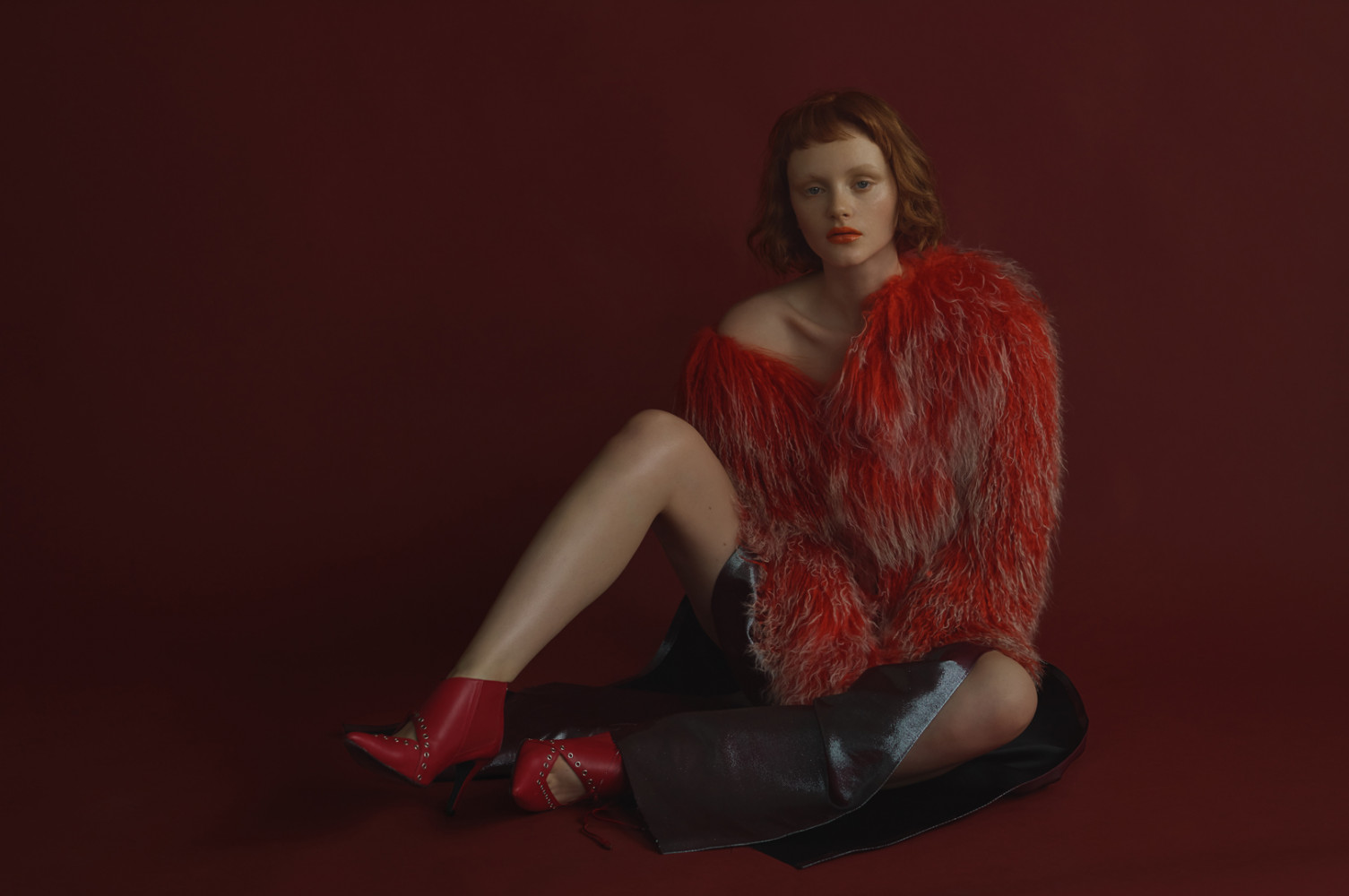


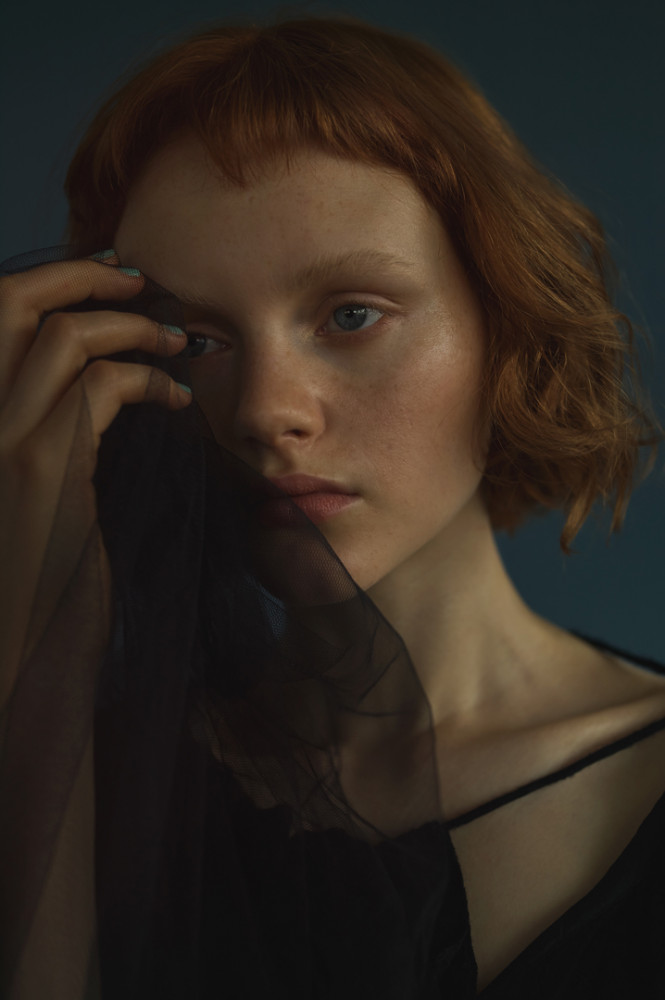
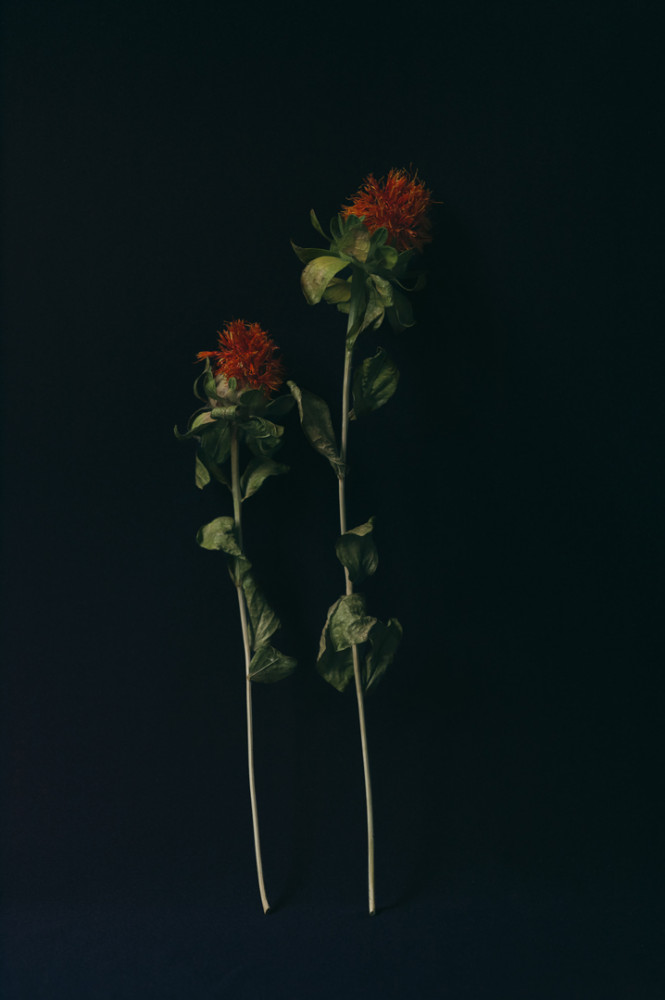
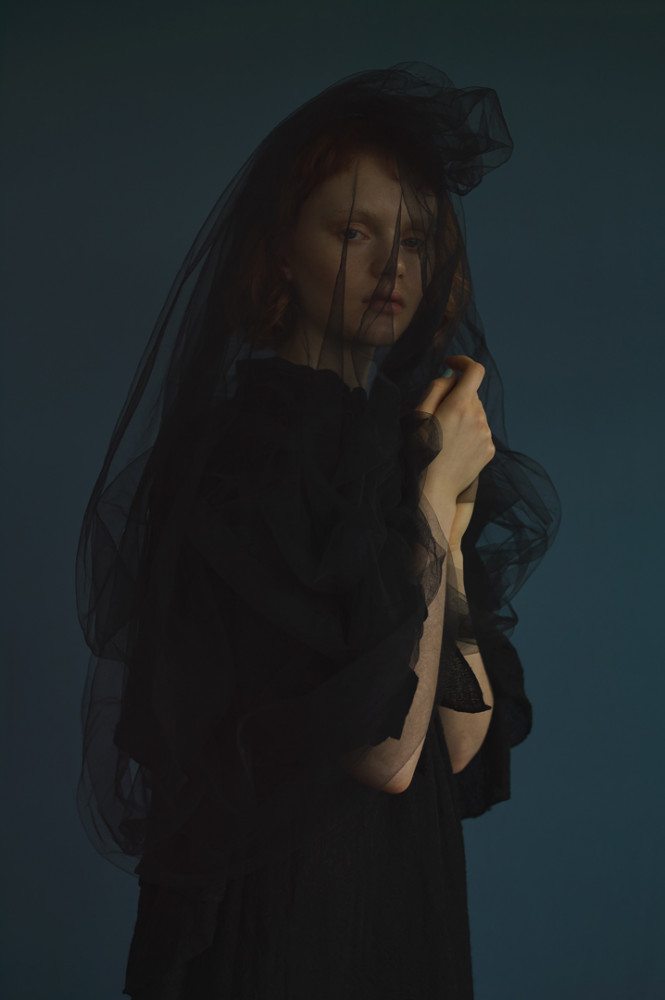
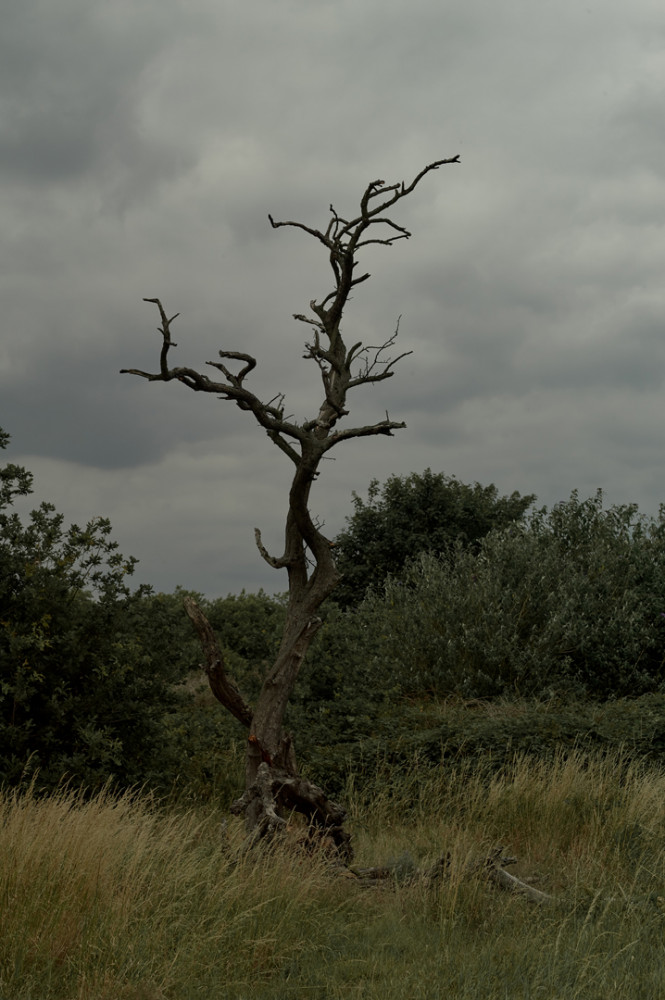
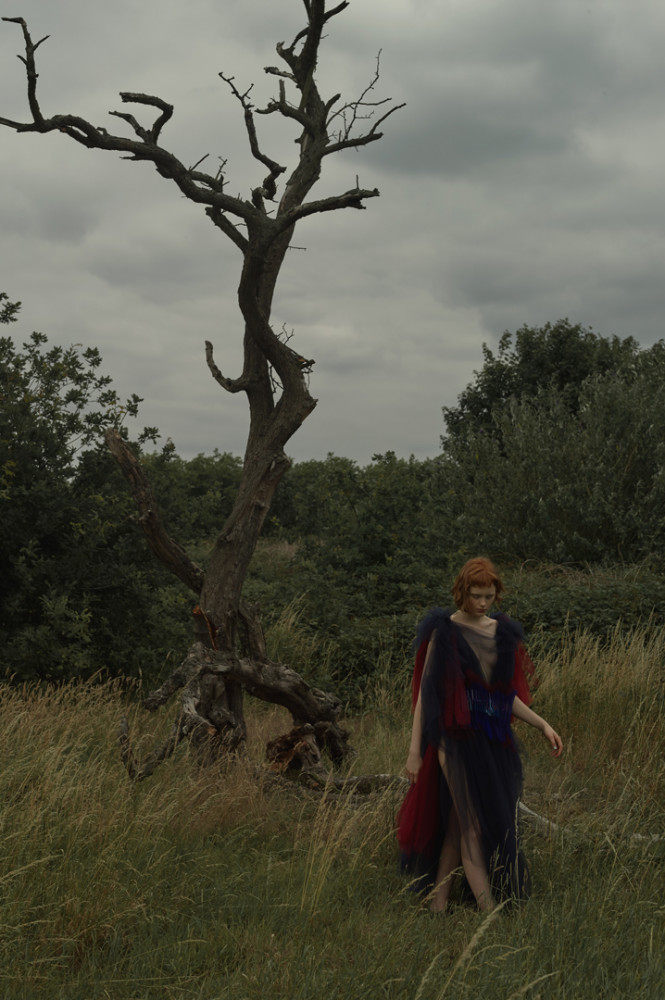
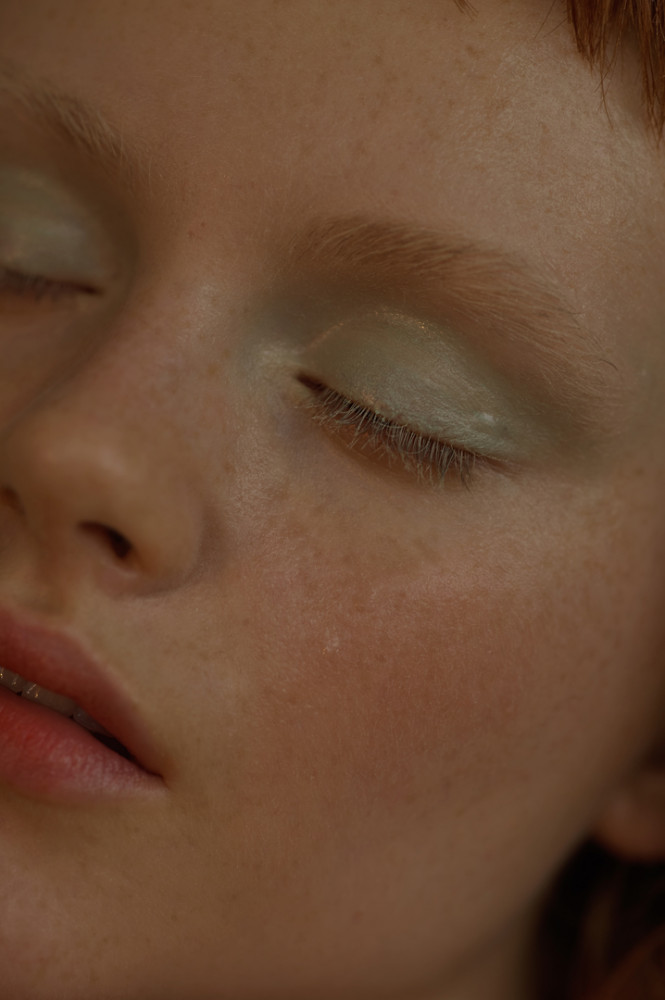
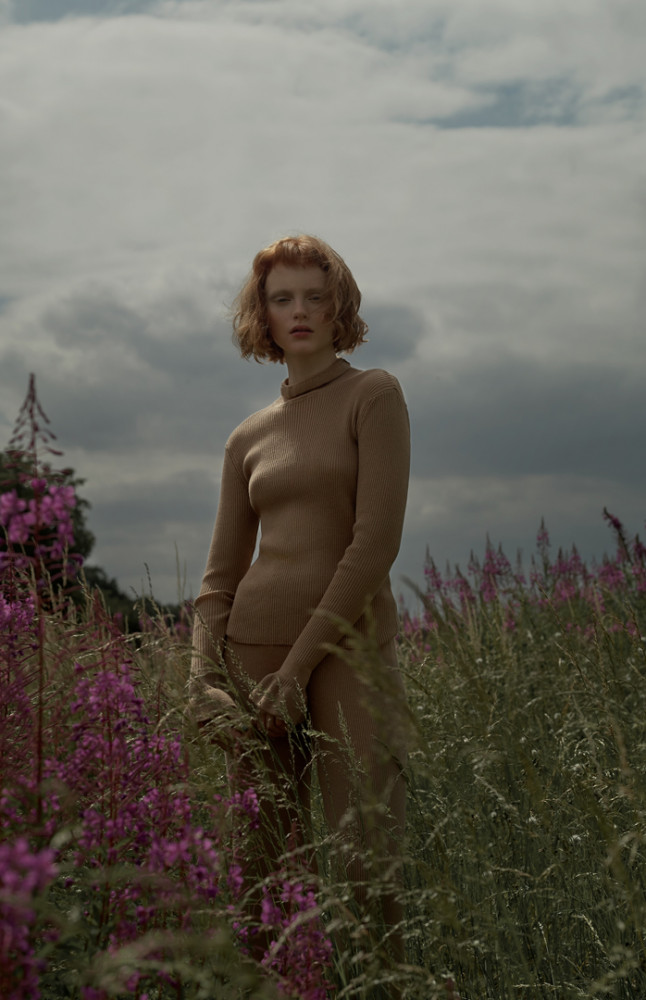
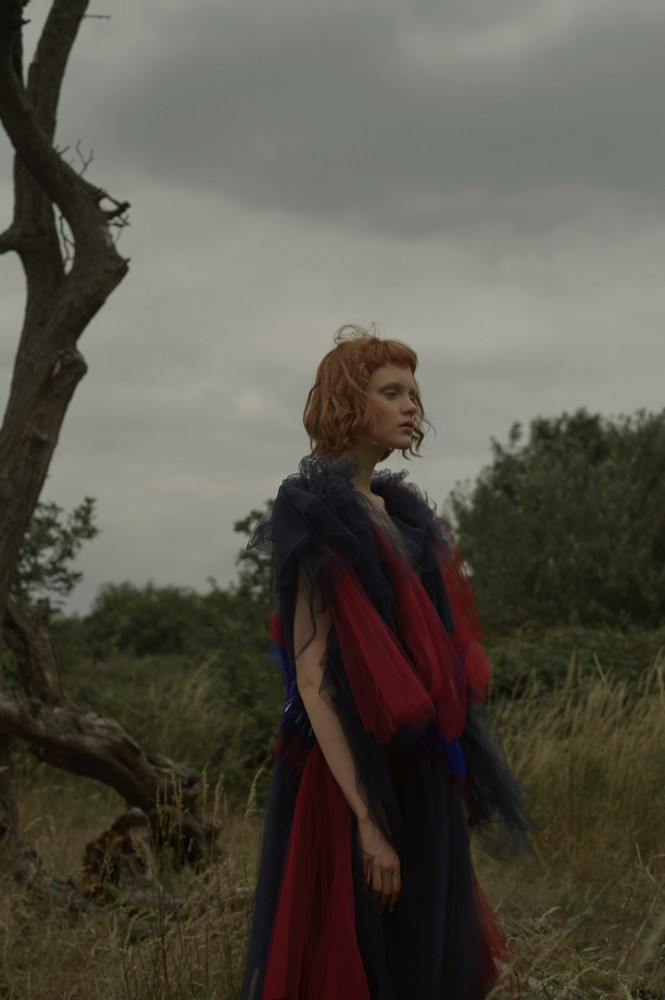
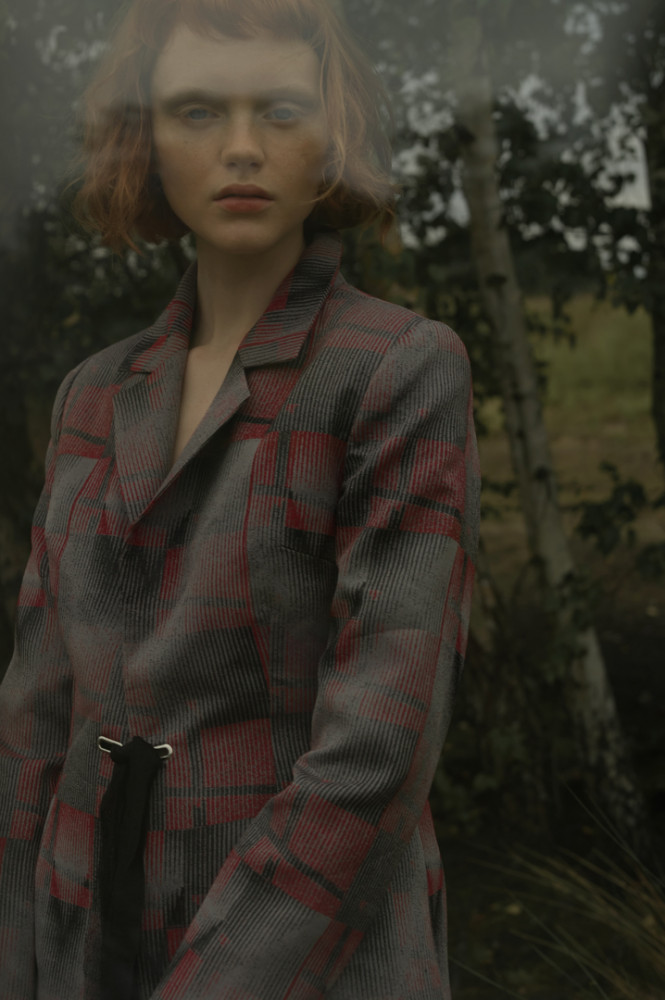
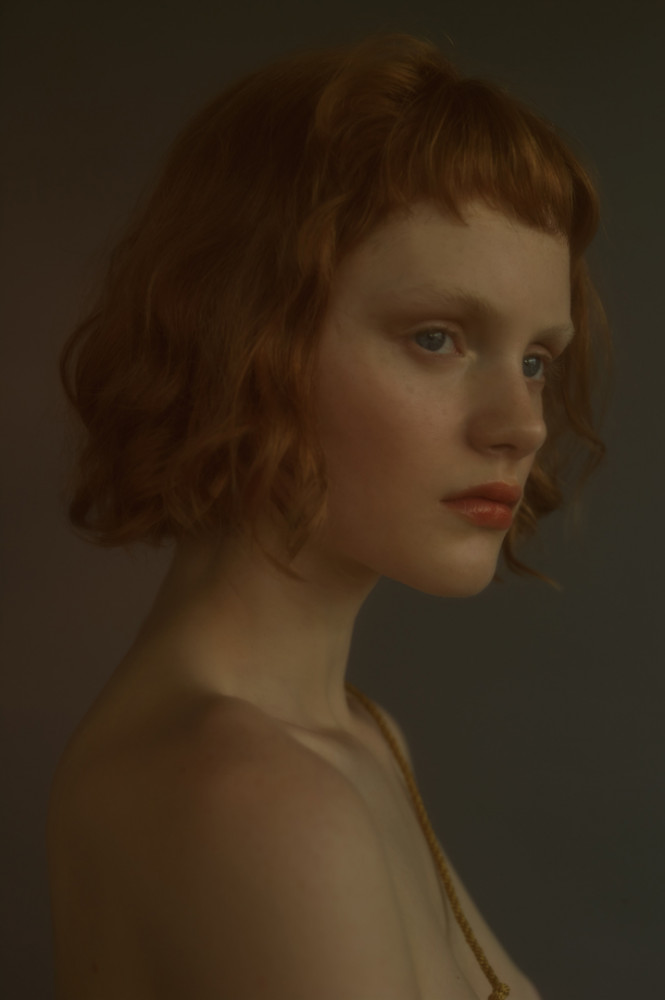
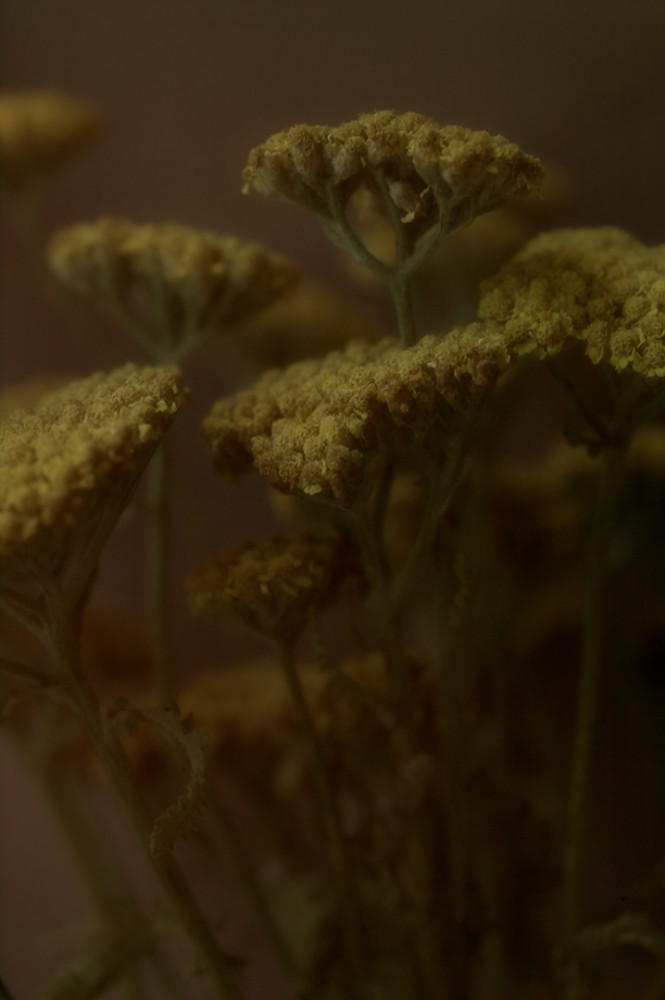
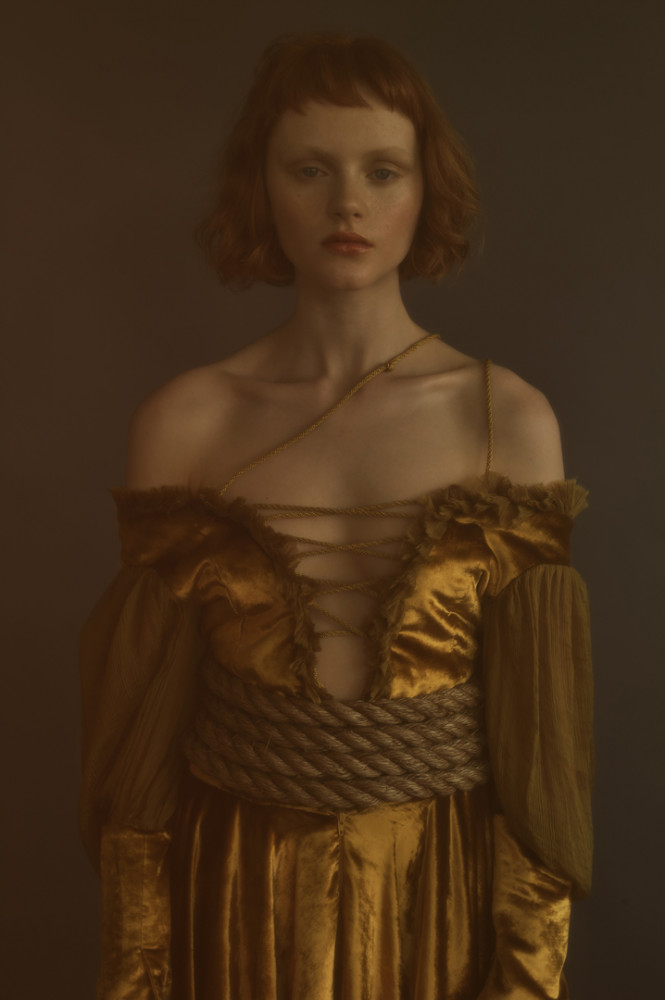
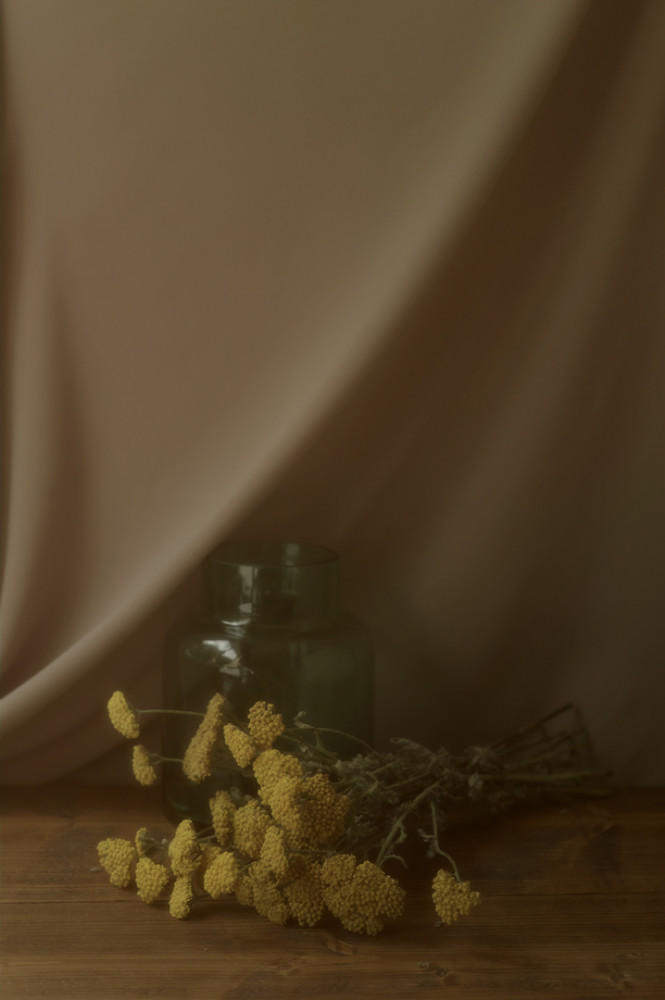
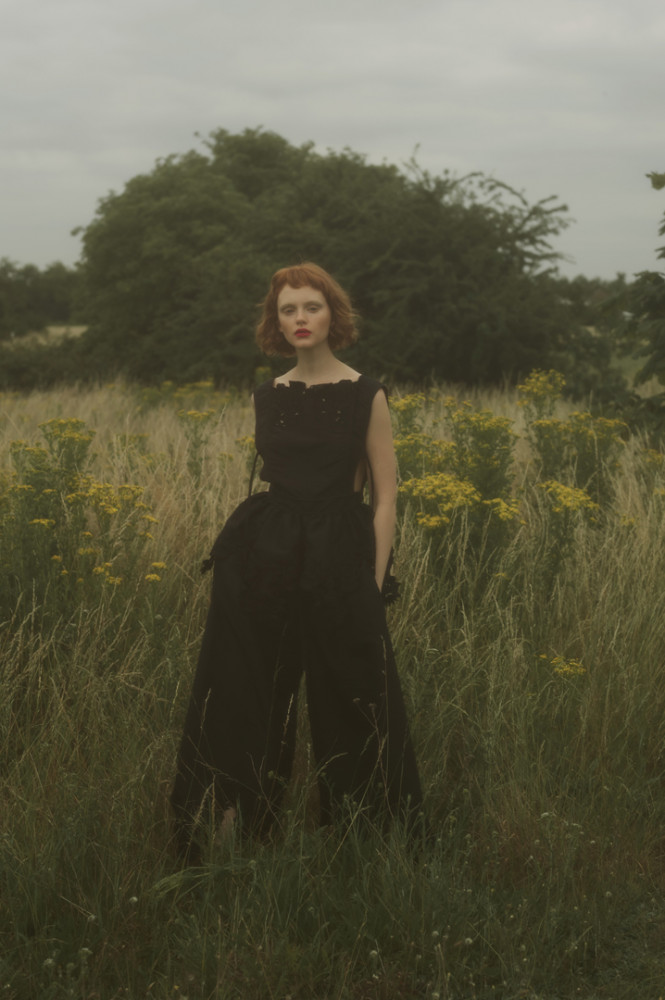
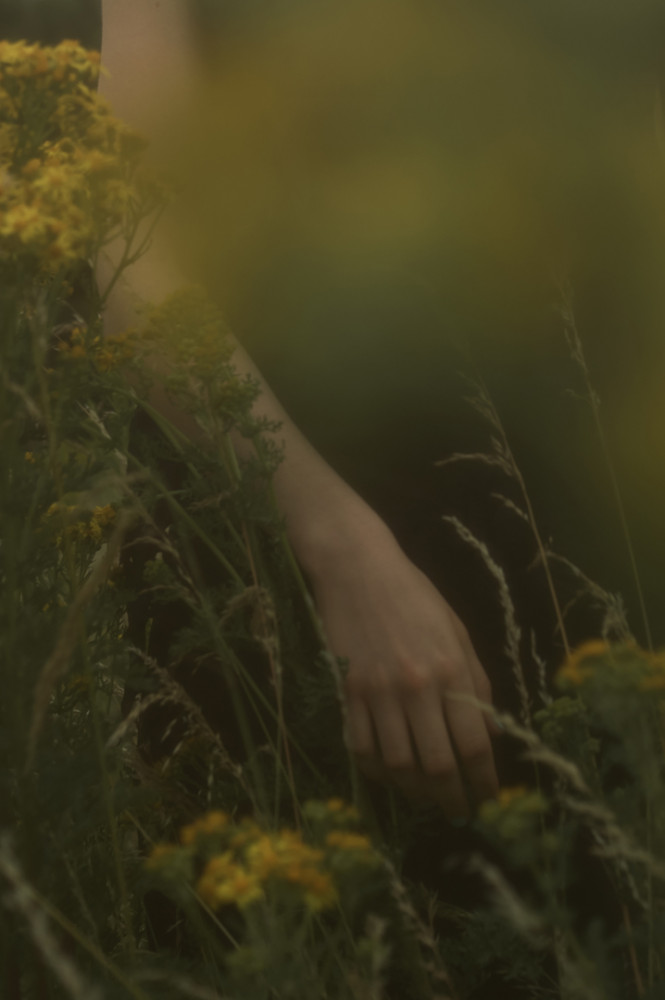
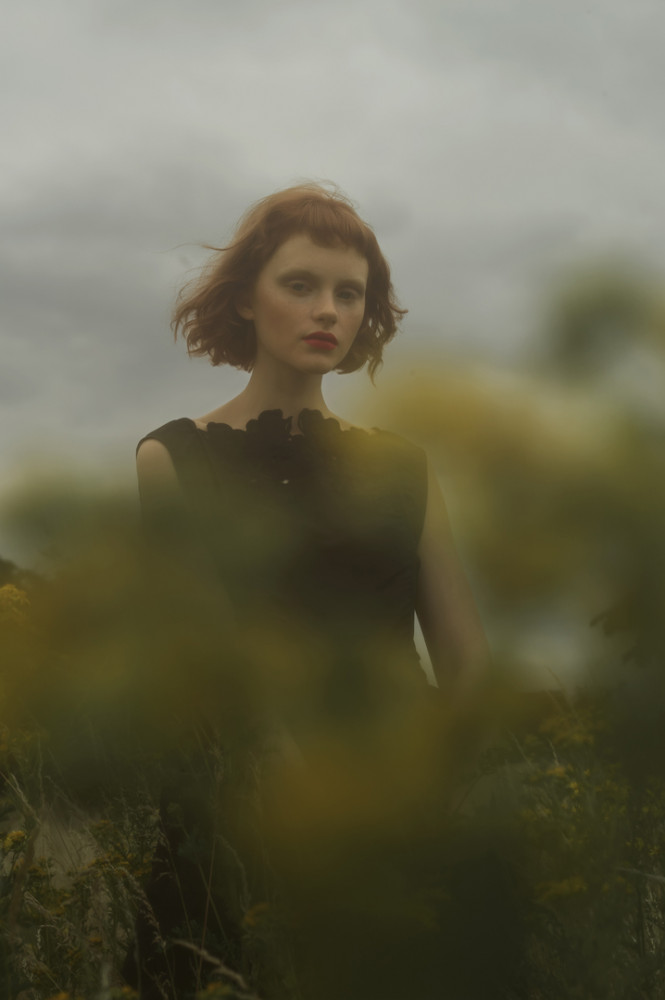
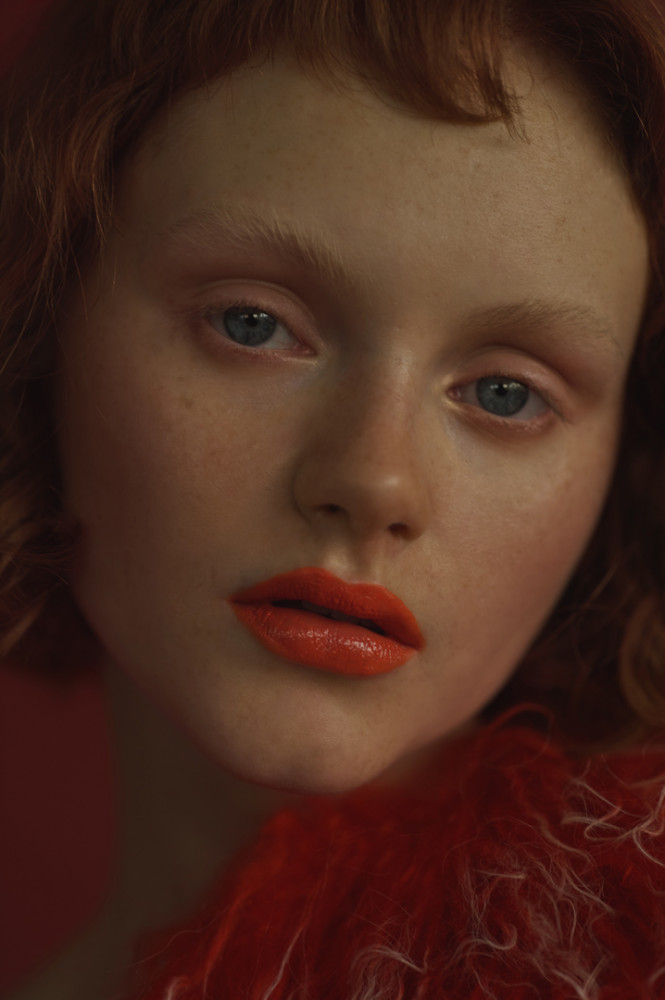

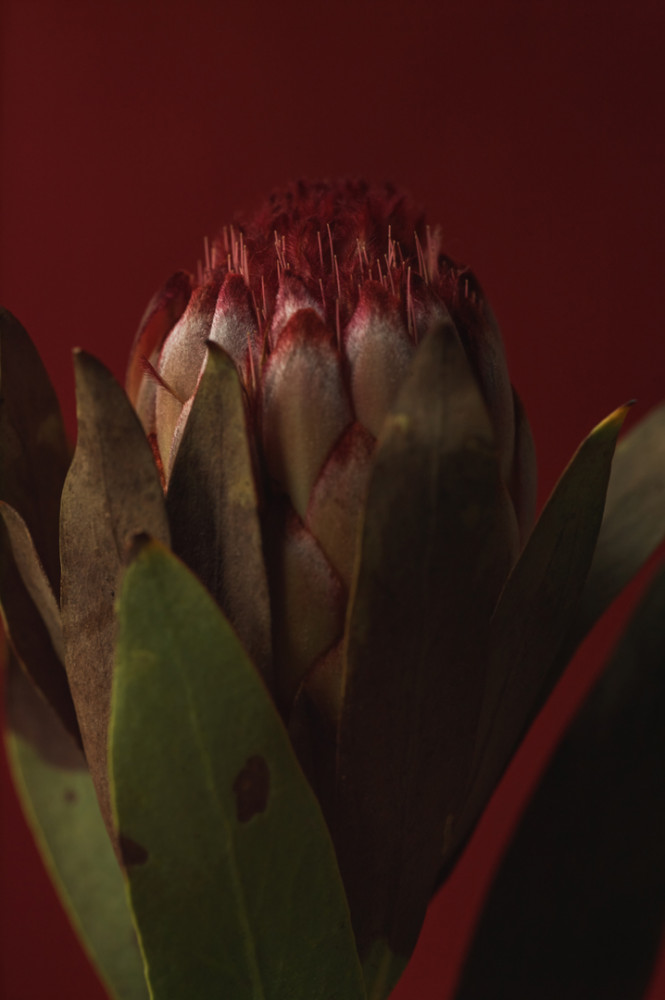
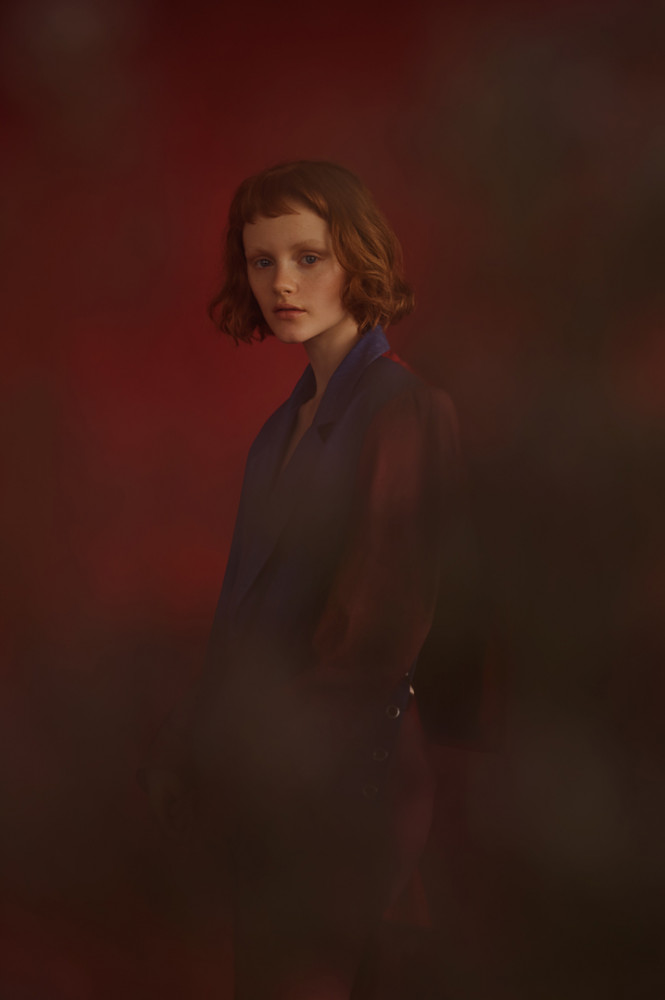
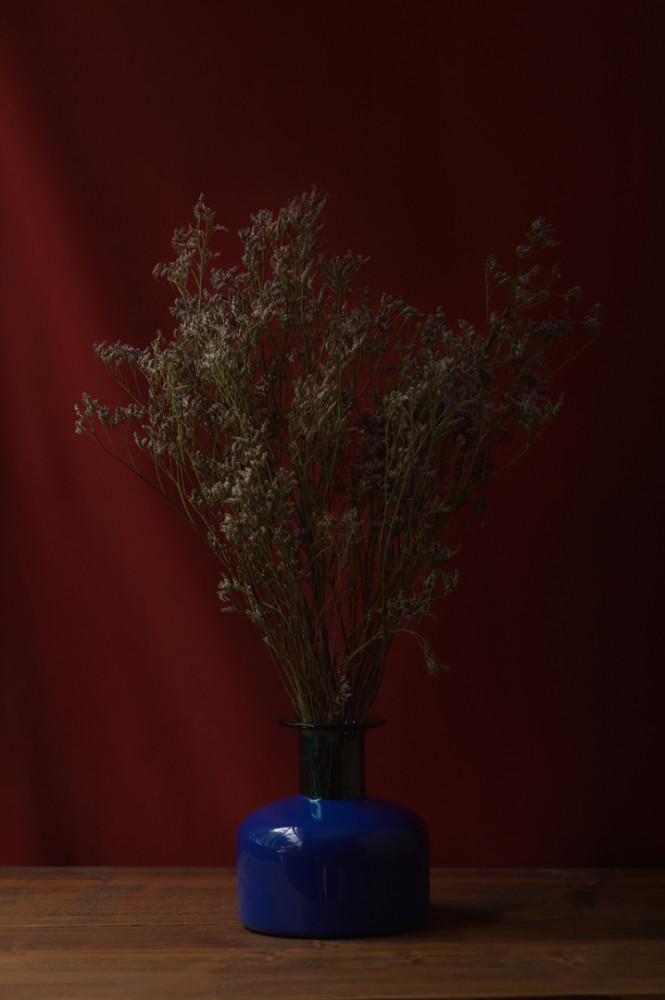
























INTERVIEW
Janina Fleckhaus
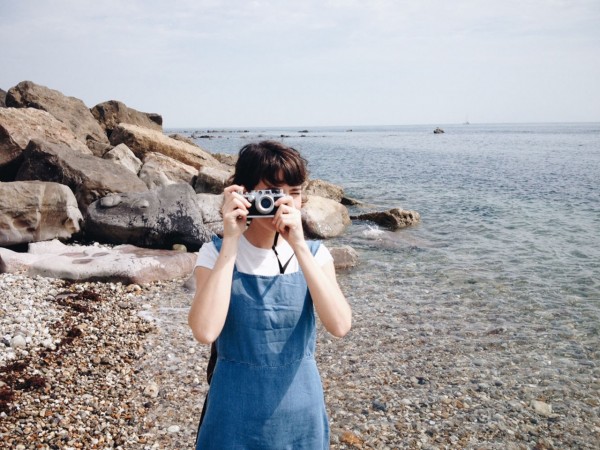
PHOTOGRAPHY Janina Fleckhaus STYLING Gabriella Stival HAIR Akiko Kawasaki using Bumble and Bumble MAKE-UP Aga Dobosz @ Carol Hayes using 3INA MODEL Emma @ Models 1 CAMERA Leica S (Typ 006) with Summarit-S 70mm f/2.5 (CS), Apo-Macro-Summarit-S 120mm f/2.5 (CS)
In “Fragile Nature”, Janina Fleckhaus explores the theme of transience, creating a secretive, melancholic dream world with picturesque still-lifes, landscapes and portraits.
You live and work in London, though you’re from Germany originally. To what degree do the two countries and their traditions influence your way of taking pictures?
I got itchy feet very early on. After school I actually wanted to go abroad, but then I got accepted to the only university I had applied to. In my final year I then did a semester in Cornwall and immediately realised that I felt more at home in England than in Germany. People here don’t take themselves so seriously, and everything is somehow a bit more relaxed. Maybe I’ve been living a bit of an imaginary ideal, but the grass is simply greener here. The English landscape is particularly inspiring. From the tropical beaches to the small villages and all the hills in between.
Before moving to London I lived in Hamburg. Photographically speaking I reached my limits there pretty quickly. Even though a large part of my inspiration comes from the era of German Romanticism, above all the paintings by Caspar David Friedrich, I always had the feeling that my photographic style was too dreamy for Hamburg.
How did you get into fashion photography?
When I started studying I had no idea what direction I wanted to go in. Before deciding on fashion photography I first tried out everything. I quickly realised, however, that I prefer to create something from within and express it outwards, than capturing things in a documentary manner. For me, fashion photography is the most creative type of photography. My ideas usually emerge from a certain feeling, that I then want to present visually. Fashion plays an important role to be able to remain in this type of dream world.
What is “Fragile Nature” all about?
“Fragile Nature” is about transience and opposites. I was inspired for the story by still-lifes from classical painting. Vanitas paintings deal mostly with the fugacity of life. What exists here and now may no longer be here tomorrow. Life and death, two opposites that bring about a certain melancholy. I took this feeling for the starting point to the story.
The look of “Fragile Nature” appears to be influenced by painting. What role do the colouring and the special lighting play?
Light and colour play a big role in my work. It’s important to me that the viewer can dive into another world. I love to work with daylight. On the whole, the grey weather in England serves me well. In addition, I used a hard, full light for the story, which makes a lovely contrast to the softer daylight, thus creating another contrast in the content as well. My approach to the colours in my pictures is similar to the colours in a painting. The background, fashion and make-up need to harmonise to create a whole.
Your story for the S Magazine alternates between studio and on location. Why? Was that to achieve a deliberate effect?
Conceptually speaking, I wanted to play with opposites. Studio and on location are just one of those opposites. Close and far, people and nature, are two of the other opposites that are part of the story.
How large was your team? Was it made up of people you can depend on? Do you have a fixed team that you always work with?
My team is always very small. I try to have as few people as possible on the set. On the whole, my photo shoots are like outings with friends. Even if I often work with new people, we always get on well as though we’ve known each other for ages. It’s very important to me that everyone gets on well. I’ve only been living in London for about a year and I’m currently building up a network made up of people I can depend on.
Are their photographic influences that are reflected in your work? Are there photographers who have impacted you especially strongly?
There aren’t really many photographers that have impacted me especially, because to date I have been more concerned by classical painting rather than other photographers. One exception is Tim Walker. He was one of the first fashion photographers I became aware of when I was first interested in photography. Even today he is one of the few that I look up to. Apart from that, Julia Margaret Cameron’s portraits have influenced me a lot. She was one of the first women photographers. Her way of using blurriness in her pictures, presenting her models in a sacred and soft manner, still fascinates me today.
What characteristics does a camera need to have for you? And how was working with the S for you?
I normally photograph with a mirror-less camera. Photographing with the Leica S was a new experience for me, and I must admit that I fell a little bit in love. I’m particularly delighted by the colours the camera produces. The S’s colour dynamics remind me of the colour schemes of painting. During post-processing, I normally guide the colours in a specific direction to achieve this paint-like effect. With this series I deliberately left the colours the way they came out of the camera.
What do you hope to achieve in the future with your photography?
At some point I’d like to visit different places in the world, just with a suitcase full of clothes and a camera. From the highest mountain, through the desert all the way to the sea. I’d like to meet people from the most diverse corners of the world and make an exhibition out of it.
Apart from that, I don’t have some big master plan for what the next few years should look like, I simply want to continue as I have till now. From the English mentality I’ve learnt not to have too big future plans, because you never know what will happen. Spontaneity is best, after all. I’m passionate about photography and that will always remain, whatever the future may bring.